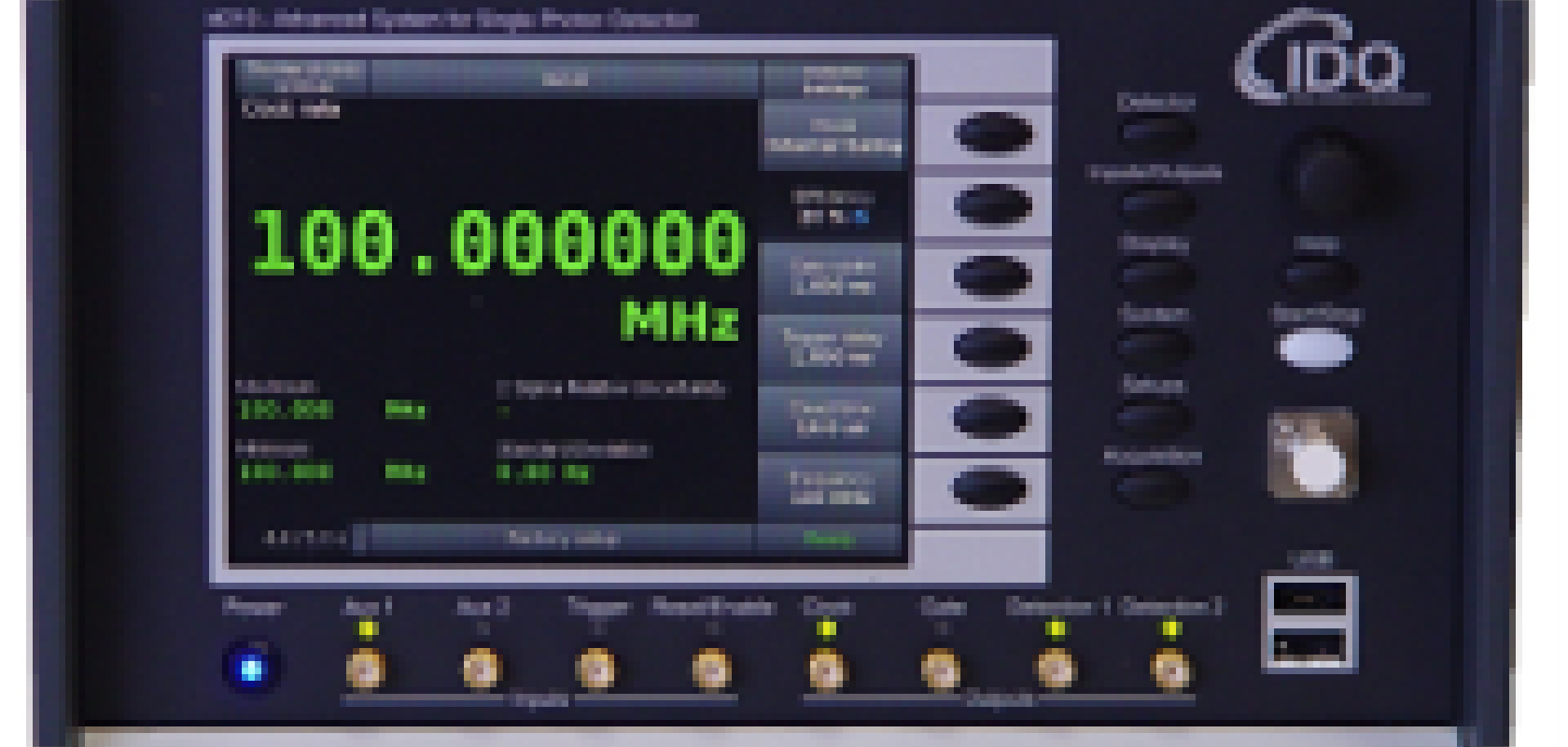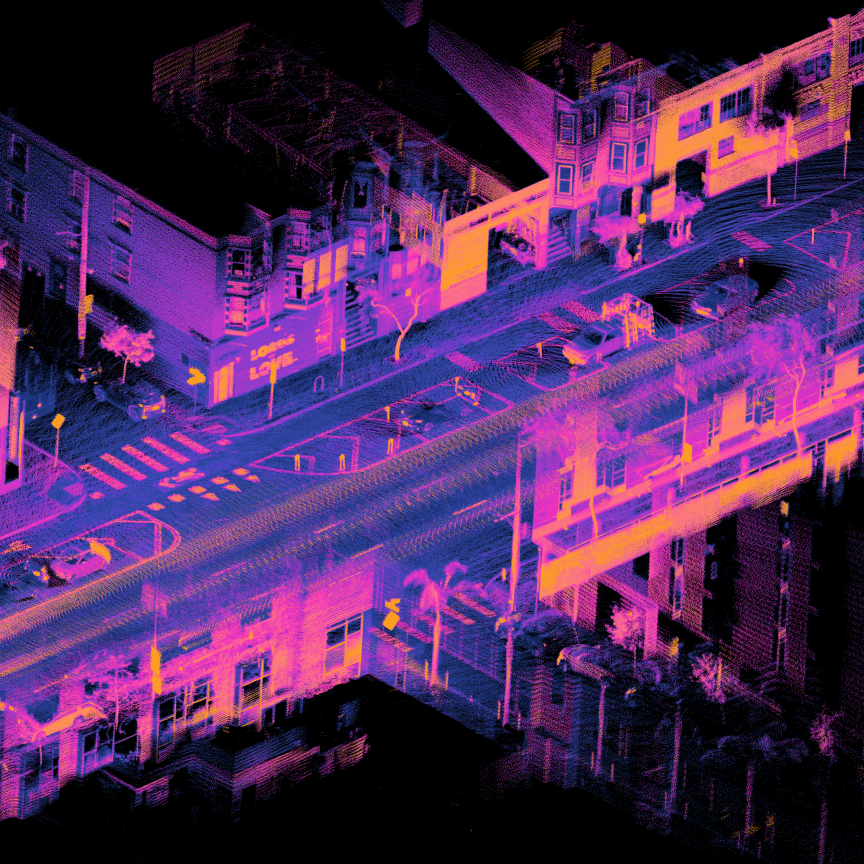World-record 100MHz trigger rate photon counter for telecom wavelengths

In a growing number of applications, the detection of single photons, the ultimate limit in detector sensitivity, is required. The availability of high-performance photon counters is crucial to continued progress in the fields of quantum information processing, quantum communication, fluorescence analysis, chemical or biological luminescence analysis, single-molecule detection, light detection and ranging (LIDAR) and optical-time-domain-reflectometry (OTDR).
In order to detect single photons, APDs need to be operated in the so-called Geiger mode. The idea is to bias the APD a few volts above the avalanche breakdown voltage, at which point the detector becomes extremely sensitive. When a photon is absorbed and triggers an avalanche process, it results in a huge increase in output current. This current then has to be quenched externally for the APD to return to a state where it is again sensitive.
There are a number of technological limitations to APDs, such as high dark count rate when thermal generation triggers avalanche events. Cooling the detector helps to minimise the impact of these spurious counts; however, electrical carriers can be trapped inside the crystal and released at a later time causing afterpulses. Since the lifetime of trapping events increases when the temperature is reduced, there is a trade-off between minimising the dark counts and the afterpulses.
In the near-infrared spectrum, Indium Gallium Arsenide/Indium Phosphide (InGaAs/InP) is the detector of choice. This device can also be deployed in photon-starved environments, when operated in Geiger mode. Due to the lower crystal quality of the InGaAs/InP material, the dark count rate of these APDs is much higher than that of silicon APDs. For the best InGaAs APDs, the dark count rate is in the range of 10,000 counts/sec at a detection probability of 10 per cent when cooled to about -50°C. Contrary to their silicon counterparts, InGaAs APDs suffer from a high density of afterpulsing, limiting the usable frequency to a few Megahertz. Therefore until today the InGaAs APDs were always operated in the 'gated' mode and at a maximum frequency in the range of maximum 10MHz.
For the first time there is a commercially available InGaAs photon counter for telecom wavelengths which can work in gated mode at frequencies up to 100MHz and free running mode; the id210 from ID Quantique.

The novelties of the developed electronics of the id210 lie in:
-
the operation with fast rise/fall times and large amplitude gates at frequency up to 100MHz, detection probability up to 25 per cent and timing resolution lower than 200ps;
-
the operation with slower rise/fall times for free-running operation and long gates with outstanding detection probability uniformity;
-
the integration of essential functions in a miniature system ensuring a quenching time lower than 2ns and reduction of afterpulsing effects;
-
the compensation of derivative pulses allowing operation at low excess bias voltages (typically <0.5V); and
-
the design of a lock-subcircuit to efficiently apply a deadtime in a time shorter than 10ns.
A. PRINCIPLE OF OPERATION
The id210 Advanced System for Single Photon Detection is built around the following blocks:
A.1. An avalanche photodiode and associated electronics
The key component at the heart of the id210 is a cooled InGaAs fibre-coupled avalanche photodiode (APD). The fibre (single mode or multi-mode) is connectorised to a FC/PC connector on the id210 front panel. The APD terminals are connected to:
-
a DC high voltage controlled by the system for reaching the efficiency set through the id210 interface,
-
a Pulser Electronics that produces constant amplitude pulses for operation in single photon regime.
The Capture Electronics detects the avalanche events (resulting from photon absorption or dark generation) and feeds the Detection 1 and 2 outputs blocks and the High Frequency (HF) detection counter. The Quenching Electronics inhibits the pulser until avalanche quenching.

A.2. The system hardware
The system hardware allows operation in free-running, free-gating, internal gated or external gated modes.
Free-running mode (asynchronous mode): Prior to photon absorption or dark count generation, the APD is biased above its breakdown voltage in Geiger mode. The Gate Output that reflects the APD state (i.e. On: photosensitive or Off: blind) is at high level. When an avalanche takes place in the APD, it is sensed by the Capture Electronics. A pulse of Width set by the user is produced at Detection 1 and Detection 2 outputs, the Detection HF counter is incremented and the Quenching Electronics stops the avalanche. For limiting the afterpulsing, the APD is maintained below breakdown until the end of the Dead Time.

Internal-gating mode: The APD is biased above breakdown during gates of adjustable Width and Frequency. Internal gating is a synchronous mode-based on a clock provided by the internal clock generator. A gate of Width set by user is open on the rising edge of the delayed trigger. As a consequence of an avalanche event within the gate, the HF Detection Counter is incremented and a pulse of Width set by the user is output at Detection 1 and Detection 2 connectors. The quenching electronics closes the gate and if selected by the user, a Dead Time is applied resulting in one or several blanked pulses after a detection.

External-gating mode: The operation in external gating mode is very similar to the internal gating mode except that the clock is provided by the user at the Trigger input.
Thanks to an internal or external trigger rate up to 100MHz, this product is simply at least five times quicker than all infrared single photon counters on the market.
Furthermore, never has a device offered the chance to use an InGaAs avalanche photo-diode working in free-running and the ability to detect the arrival of photons at anytime. This is now done!
Finally, for the first time, a InGaAs/InP single photon counter conjugates and offers the possibility to work in free-running, free-gating, internal gated or external gated modes.
A.3. Interfaces: Trigger, Reset/Enable, Aux1 and Aux2 inputs blocks and Clock, Gate, Detection1 and Detection2 outputs blocks
Through the id210 interface, each input can be set independently for receiving NIM, LVTTL-LVCMOS, NECL, PECL3.3V or PECL5V signals. Each output can be set independently for providing NIM, LVTTL-LVCMOS, NECL, PECL3.3V or PECL5V signals.
The id210 is a photon counter that can be integrated in all research set-ups due to the number of connectors and the variety of supported signals.
A.4. A two-channel event counter and a coincidence counter as an auxiliary independent block
The signals outputted by Aux1 and Aux2 inputs blocks feed HF Counter Aux1 and HF Counter Aux2 after pulse shaping. The block also performs a logic AND of the two inputs that feeds a coincidence counter: HF Counter Aux1 and Aux2.
One more time this device is strongly innovating compared to every product available on the market. This two-channel event counter and this coincidence counter will significantly boost research concerning quantum optics and quantum cryptography, especially study of photon doublets and triplets.
B. USER INTERFACE
All the user parameters are intuitively adjusted with direct access buttons (Detector, Inputs/Outputs, Display, System, Setups and Acquisition), sub-menus control buttons and the control wheel on the id210 front panel.

The bicolour indicating LEDs associated to SMA connectors inputs or outputs provide relevant informations such as valid triggers, pulses traffic at the outputs or unused inputs/outputs in the selected mode. Two USB connectors on the front panel can be used for connecting a keyboard or for data export on a storage key. The backlight intensity can be adjusted automatically or manually. The id210 is equipped with a buzzer that can be optionally used for indicating, for instance, the end of the cooling phase. On the rear panel, Ethernet and USB connectors can be used for remote control. A VGA HD-15 connector for external monitor/projector is accessible as well on the rear panel.
The id210 contains 6 HF counters providing the Detection, the Clock, the Gate, the Aux1, the Aux2 and the Aux1 and Aux2 coincidence rates. The id210 displays indicators associated to counters or any operation (+ - / x) between counters. Up to five different views can be set, saved and restored. A view defines the number of indicators displayed simultaneously (selected between 1 and 4) and the counter or operation between counters associated to each indicator.
The user can choose between three counting modes: Totalize, Frequency (Current) and Frequency (Last):
-
In Totalize mode, the counters are reset upon pressure on the start/stop button. The numbers of counts since start are displayed until second pressure on the start/stop button. The user can then save the data on a USB storage key and/or restart the acquisition.
-
In Frequency (Current) mode, the user selects the integration time between 0.2s to 100s (or infinite) by step of 0.2s. The id210 continuously computes and displays the mean value, the relative standard deviation, the minimum and maximum values taken during the 0.2s sampling period over the integration period, for the 6 HF counters. Upon pressure on the start/stop button, the user can save the data (integration period number, mean value, standard deviation, minimum and maximum values) for the 6 HF counters.
-
In Frequency (Last) mode, the operation is similar to the Frequency (Current) mode except that the data display is delayed by the integration period.
The id210 allows the user to save up to five setups on internal memory. A setup includes all inputs/outputs parameters, view parameters and detector parameters (mode, efficiency, delay, width...).
C. LIGHT SOURCE
IDQ's id300 short-pulse laser source is the ideal companion to the id210. The laser source can be directly triggered by the id210's internal trigger. When the output power is properly reduced with a calibrated optical attenuator, the id300 ideally simulates a single photon source.

Key features of the id300:
-
Typical pulse duration of 300 ps
-
Repetition rate from DC to 500 MHz
-
Wavelength of 1310 nm or 1550 nm
-
External trigger
-
FP or DFB Laser Type
CONCLUSION
For the first time, an InGaAs/InP photon counter, the id210, conjugates and offers the possibility to work in free-running, free-gating, internal gated or external gated modes and this up to 100MHz trigger rate.
Coupling in the same device very high technologies, ease to use interface and universal inputs/outputs, this product is definitely the best single photon counter from 900nm to 1,700nm available on the market.
Exploiting the well-known technology of avalanche photodiode, extremely innovative electronics permits to create this unique device to detect photon at telecom wavelengths.
For research labs and industries active in the quantum optic field, specifications and performances of this device are quite impressive and bring a real hope concerning future developments in cryptography, single-photon source characterisation or even eye-safe Laser Ranging Lidar (LIDAR) for the next five years.

